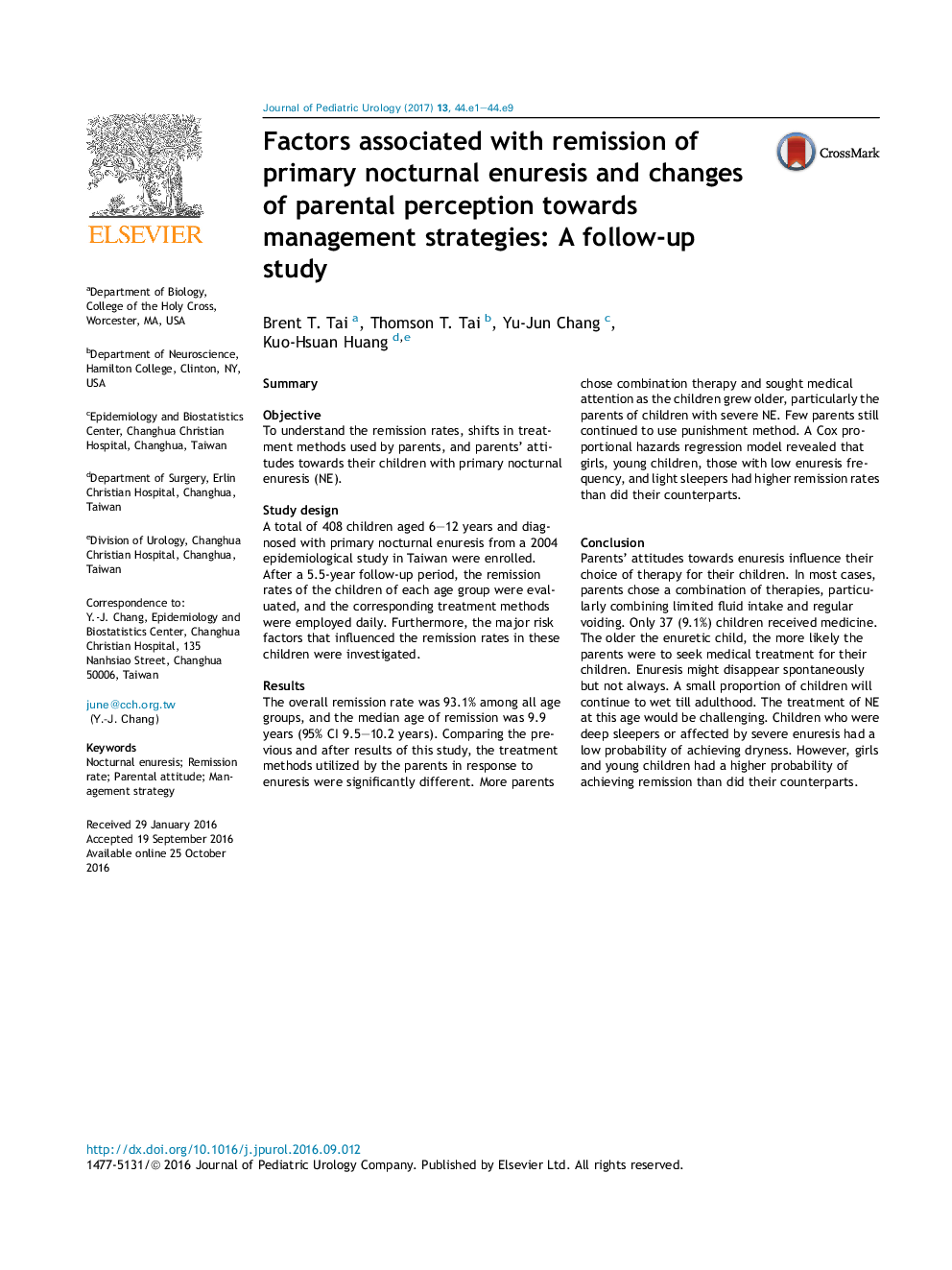| کد مقاله | کد نشریه | سال انتشار | مقاله انگلیسی | نسخه تمام متن |
|---|---|---|---|---|
| 5718648 | 1411255 | 2017 | 9 صفحه PDF | دانلود رایگان |
SummaryObjectiveTo understand the remission rates, shifts in treatment methods used by parents, and parents' attitudes towards their children with primary nocturnal enuresis (NE).Study designA total of 408 children aged 6-12 years and diagnosed with primary nocturnal enuresis from a 2004 epidemiological study in Taiwan were enrolled. After a 5.5-year follow-up period, the remission rates of the children of each age group were evaluated, and the corresponding treatment methods were employed daily. Furthermore, the major risk factors that influenced the remission rates in these children were investigated.ResultsThe overall remission rate was 93.1% among all age groups, and the median age of remission was 9.9 years (95% CI 9.5-10.2 years). Comparing the previous and after results of this study, the treatment methods utilized by the parents in response to enuresis were significantly different. More parents chose combination therapy and sought medical attention as the children grew older, particularly the parents of children with severe NE. Few parents still continued to use punishment method. A Cox proportional hazards regression model revealed that girls, young children, those with low enuresis frequency, and light sleepers had higher remission rates than did their counterparts.ConclusionParents' attitudes towards enuresis influence their choice of therapy for their children. In most cases, parents chose a combination of therapies, particularly combining limited fluid intake and regular voiding. Only 37 (9.1%) children received medicine. The older the enuretic child, the more likely the parents were to seek medical treatment for their children. Enuresis might disappear spontaneously but not always. A small proportion of children will continue to wet till adulthood. The treatment of NE at this age would be challenging. Children who were deep sleepers or affected by severe enuresis had a low probability of achieving dryness. However, girls and young children had a higher probability of achieving remission than did their counterparts.
Journal: Journal of Pediatric Urology - Volume 13, Issue 1, February 2017, Pages 44.e1-44.e9
